Pterodactylus is a genus of extinct pterosaur that soared through the skies of the Late Jurassic period, approximately 150 to 148 million years ago. This pioneering species holds the honor of being the first pterosaur ever identified by paleontologists. Its discovery in the Solnhofen limestone of Bavaria, Germany, completely changed our perception of life in the Mesozoic. This article embarks on a journey through time to explore the discovery, physical characteristics, lifestyle, and the indelible mark Pterodactylus has left on science.
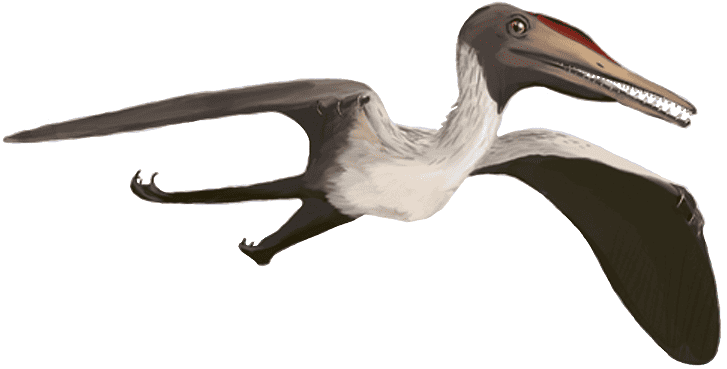
Discovery and Naming
The saga of Pterodactylus begins with an extraordinary discovery in the 18th century. The type specimen of Pterodactylus antiquus, the first species discovered within this genus, emerged from the Solnhofen limestone in Bavaria, Germany. This was a milestone for paleontology showing how prehistoric flying reptiles first took to the sky, before birds.
In 1784, the Italian scientist Cosimo Alessandro Collini was the first to describe this enigmatic specimen, although he couldn’t exactly fathom its nature. Collini’s account, devoid of any recognition of the creature’s ability to fly, suggested that Pterodactylus was a marine creature that inhabited the ocean’s depths. This may sound peculiar today but it reflected the limited understanding of prehistoric life at the time. Other early views from this time mistakenly cast Pterodactylus as a bat-like mammal.
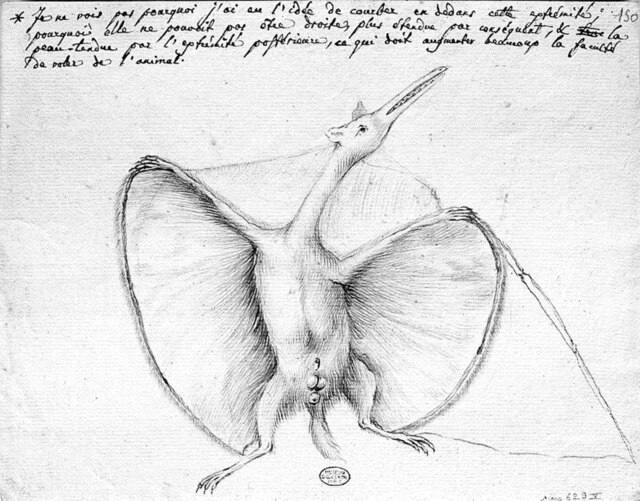
It was not until the contributions of French scientist Georges Cuvier in the early 19th century that Pterodactylus was correctly identified as a flying reptile, thanks to Cuvier’s keen observations of the fossil’s anatomical features. The name Pterodactylus, meaning “Winged Finger”, was coined by Cuvier, a nod to its features conducive to flight — a skin membrane supported by an elongated fourth finger.
Over time, the study of additional fossil specimens refined our understanding of Pterodactylus, distinguishing it from other pterosaurs and establishing it as a key figure in the evolution of flight in vertebrates. Ultimately, following this murky period, Pterodactylus antiquus was established as the type species, thanks to the meticulous work of researchers like Richard Lydekker in the late 19th century.
Physical Description
Pterodactylus antiquus had a relatively small stature compared to its later kin. With an estimated adult wingspan of approximately one meter, it was modest in size but remarkably adapted for flight. The defining characteristic of Pterodactylus was its wings, comprised of complex structures of skin and muscle, anchored by the creature’s elongated fourth finger. This wing membrane, supported internally by collagen fibers and externally by keratinous ridges, allowed for efficient and agile flight.
The Pterodactylus skull was elongated and adorned with about 90 narrow, conical teeth. These teeth were not uniform but varied in size, becoming smaller further from the tip of the jaw. This dentition suggests a diet adapted to catching and consuming a variety of small prey. Unlike some of its relatives, where teeth were absent at the tip of the upper jaw, Pterodactylus’ teeth extended almost to the very end of its jaws.
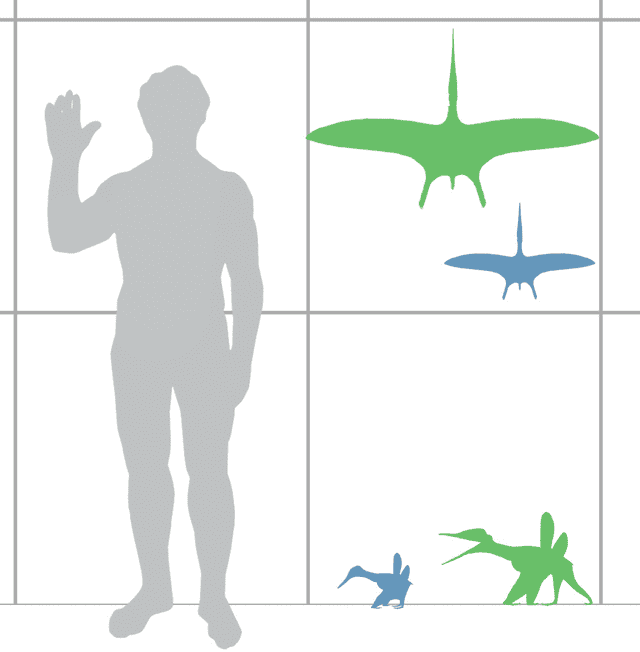
One of the more intriguing aspects of Pterodactylus’ anatomy is the presence of a soft tissue crest in adult specimens. This crest, believed to be a display structure, extended from the back edge of the antorbital fenestra to the back of the skull. This crest was occasionally supported by a short bony base, a feature that became more pronounced with age, suggesting a role in social interactions. Juvenile and adult Pterodactylus specimens present variations in their skeletal structure. Juveniles, for example, had a smaller number of teeth and different proportions in their limb bones. These distinct growth stages have often been mistaken for different species.
Lifestyle and Behavior
Pterodactylus‘ lifestyle, while subject to some speculation, is inferred through comparisons with modern animals and the study of its physical adaptations. Pterodactylus was a generalist carnivore, utilizing its sharp teeth and agile flying abilities to capture prey. The arrangement and sharpness of its teeth suggest a diet that included fish, insects, and possibly smaller terrestrial animals. Its eyes, protected by a ring of bony scleral plates, indicate a vision-centric hunting strategy, likely spotting prey from above during flight. Analyses of these scleral rings, along with other physical characteristics, suggest that Pterodactylus was diurnal, much like many modern birds of prey.
The flight capabilities of Pterodactylus, facilitated by its wing structure, were undoubtedly central to its way of life. The wings consist of a membrane stretched between the elongated fourth finger and the hind limbs. They enabled long-distance flights as well as great maneuverability. This mobility would have been crucial for hunting, evading predators, and perhaps even in social interactions within flocks.
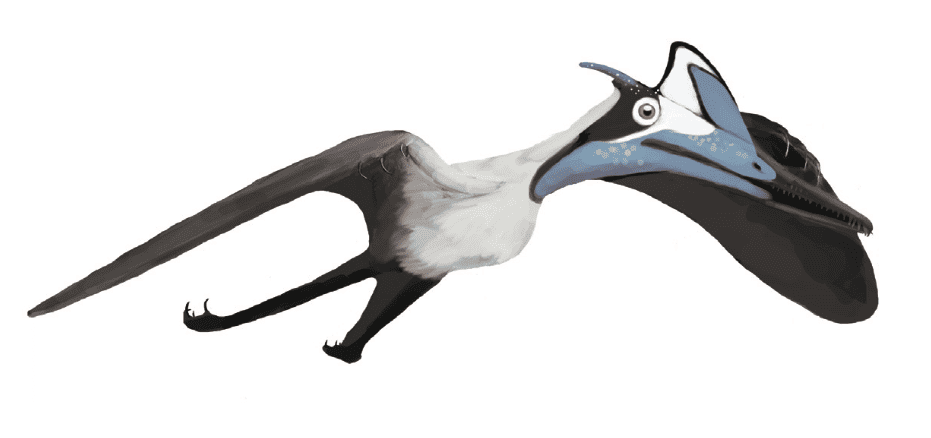
The presence of a soft tissue crest in adults suggests that visual displays might have played a role in mating rituals or territorial disputes, pointing to complex social behaviors. Breeding and growth patterns in Pterodactylus also reveal insights into its lifestyle. The discovery of different growth stages among fossil specimens indicates that Pterodactylus underwent significant changes in size and proportions as it aged.
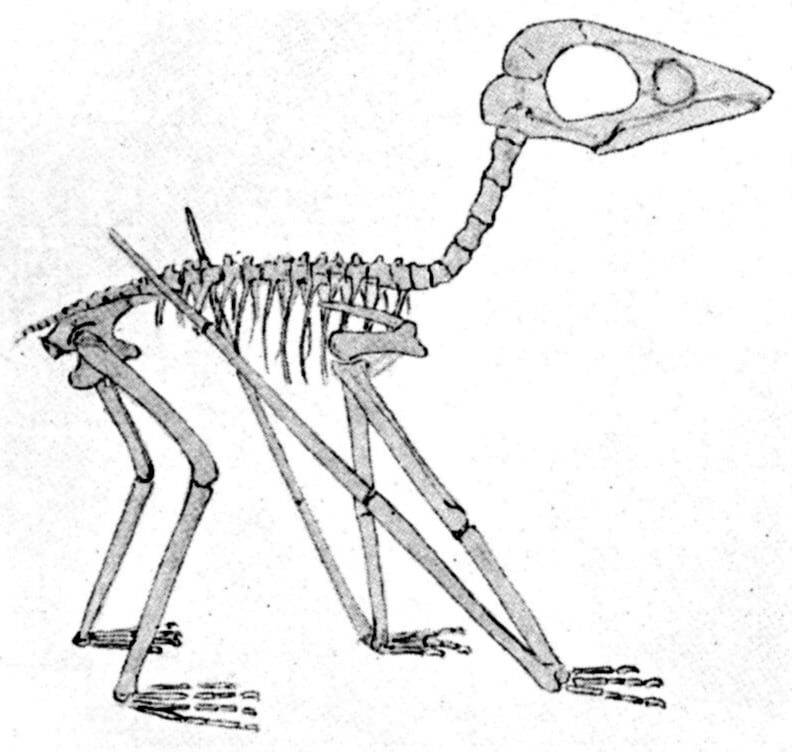
Paleoecology
The Solnhofen limestone of Bavaria, where Pterodactylus antiquus was first discovered, provides a window into a diverse ecosystem of the Late Jurassic. This geological formation, known for its exceptionally well-preserved fossils, captures a moment in time roughly 150 million years ago when Europe looked completely different, comprised of a series of islands in a shallow tropical sea. The flora of the Solnhofen islands, while less well-documented than the fauna, likely consisted of conifers, ferns, and cycads.
Within this ecosystem, Pterodactylus shared the skies with other pterosaurs, such as the long-tailed Rhamphorhynchus and Scaphognathus. The presence of multiple pterosaur species suggests a well-structured ecosystem where each species adapted to exploit different food sources and habitats, minimizing direct competition.

The Solnhofen limestone also reveals a rich marine environment, inhabited by a plethora of aquatic organisms including fish, crustaceans, and predatory marine reptiles like plesiosaurs and ichthyosaurs. Pterodactylus is thought to have skimmed the water’s surface to catch fish or ambushed smaller prey from the air.
On land, the contemporaneous presence of early birds, such as Archaeopteryx, points to the beginnings of avian evolution and provides context for the diverse strategies that flying vertebrates diverged towards.
Classification and Scientific Significance
The classification of Pterodactylus within the broader pterosaur family tree has been debated among paleontologists. Initially grouped with all flying reptiles under the single “Pterodactylus” banner, subsequent discoveries and analyses have refined its classification, revealing a complex lineage of evolutionary relationships.

Pterodactylus is now recognized as a basal member of the Pterodactyloidea order. This group of more advanced pterosaurs exhibited significant anatomical innovations compared to their predecessors. These include the development of shorter tails and more elongated skulls, adaptations that likely contributed to their success as aerial predators. Within the Pterodactyloidea, Pterodactylus is classified as part of the Ctenochasmatidae family, characterized by long, slender jaws with numerous small teeth. This animal was closely related to other ctenochasmatids such as Gnathosaurus and Ctenochasma.
As one of the earliest and most well-documented pterosaurs, Pterodactylus remains a key figure in paleontology, offering clues to the flight mechanics and evolution during the Mesozoic. Although Pterodactylus has not been explicitly featured in many mainstream movies, TV shows, or video games that focus accurately on its species, its influence is undeniable in the depiction of pterosaurs across popular culture.







